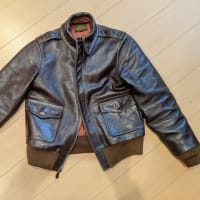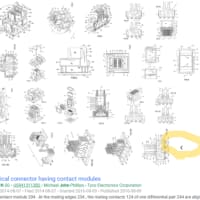「小型ならベタでいい・・・大型化すると素子を分離するケースが多い・・・ベタ膜を短冊状にレーザスクライプする」、素子分離、株式会社ステラ・コーポレーション、業界用語解説
US2018114642(JP)
"[0156] The membrane resistivity of the metal vapor deposition film (metal membrane) is from 1 to 150Ω/□ from the viewpoint of electrical characteristics of the resultant capacitor. From the viewpoint of self-healing property thereof, a higher value within this range is more desired. The membrane resistivity is more preferably 5Ω/□ or more, even more preferably 10Ω/□ or more. From the viewpoint of the safety of the capacitor, the membrane resistivity is more preferably 100Ω/□ or less, even more preferably 50Ω/□ or less, in particular preferably 20Ω/□ or less. The membrane resistivity of the metal vapor deposition film is measurable while the metal is deposited, using, for example, a two-terminal method known by those skilled in the art. The membrane resistivity of the metal vapor deposition film is adjustable by adjusting, for example, the power of the vaporization source to control the vaporization quantity of the metal. The above-mentioned range of the membrane resistivity of the metal vapor deposition film is a preferred range in the case of, for example, entire-surface vaporization of the metal, or the transfer of an especial margin. In the case of an oblique deposition method, the deposition may be performed while the thickness of the resultant deposited membrane is changed in accordance with membrane resistivities ranging from about 50 to 100Ω/□. The thickness of the metal film is not particularly limited, and is preferably from 1 to 200 nm. "
[0095] 金属蒸着膜(金属膜)の膜抵抗は、コンデンサの電気特性の点から、1〜150Ω/□が好ましい。この範囲内でも高めであることがセルフヒーリング(自己修復)特性の点から望ましく、膜抵抗は5Ω/□以上であることがより好ましく、10Ω/□以上であることがさらに好ましい。また、コンデンサとしての安全性の点から、膜抵抗は100Ω/□以下であることがより好ましく、50Ω/□以下であることがさらに好ましく、20Ω/□以下であることが特に好ましい。金属蒸着膜の膜抵抗は、例えば当業者に既知の二端子法によって金属蒸着中に測定することができる。金属蒸着膜の膜抵抗は、例えば蒸発源の出力を調整して蒸発量をすることによって調節することができる。金属蒸着膜の膜抵抗の上記範囲は、例えばベタ蒸着または特殊マージンを転写する場合の好適な範囲となる。なお、傾斜蒸着法の場合においては、50〜100Ω/□程度の膜抵抗で蒸着膜の厚さに変化を設けて蒸着が行われてよい。金属膜の厚さは、特に限定されないが、1〜200nmが好ましい。
US2017294269(JP)
"[0056] In the vapor-deposited metal films 2A′, 2B′, a slit formation region VA including the vapor-deposition-free slits s and fuse portions fs is formed on the surfaces of the dielectric films 1A′, 1B′ by so-called selective vapor deposition. A non-slit formation region NA including neither vapor-deposition-free slits s nor fuse portions fs is formed on the surfaces of the dielectric films 1A′, 1B′ by so-called solid vapor deposition. The pattern of the vapor-deposition-free slits s is in no way limited to the example shown in the drawings, and various patterns can be adopted. "
金属蒸着膜2A’、2B’のうち、非蒸着スリットsやヒューズ部fsを具備するスリット形成領域VAはいわゆるパターン蒸着にて誘電体フィルム1A’、1B’の表面にそれぞれ形成され、非蒸着スリットsやヒューズ部fsを具備しないスリット非形成領域NAはいわゆるベタ蒸着にて誘電体フィルム1A’、1B’の表面にそれぞれ形成される。なお、非蒸着スリットsのパターン形状は図示例に何等限定されるものではなく、多様なパターン形状が適用可能である。
US2017200913(JP)
"[0081] Note that the metal oxide layer 2 of the present invention may have any aspect as long as the layer has a configuration in which the surface roughness of 5 nm or less is satisfied. For example, although the metal oxide layer 2 according to the present embodiment is constituted by use of the layer medium (binder) and the metal oxide nanoparticles dispersed in the layer medium, the metal oxide layer may be constituted without use of the layer medium. In this case, in the above-mentioned method for forming the metal oxide layer 2, the layer may be formed by coating, on the transparent substrate 11 formed with the metal thin wire pattern 1, a dispersion liquid in which the metal oxide nanoparticles are dispersed in a solvent, and by being subjected to the drying treatment.
[0082] Furthermore, the metal oxide layer may be formed as a solid film composed of the above-mentioned metal oxide material. "
[0059] なお、本発明の金属酸化物層2は、表面粗さが5nm以下を満たす構成であればどのような態様であってもよい。例えば、本実施形態の金属酸化物層2は、層媒体(バインダー)と層媒体中に分散される金属酸化物ナノ粒子とを用いて構成したが、層媒体を用いない構成としてもよい。この場合、上述した金属酸化物層2の形成方法においては、溶媒中に金属酸化物ナノ粒子を分散させた分散液を金属細線パターン1が形成された透明基板11上に塗布し、乾燥処理することで形成することとする。
また、例えば上述の金属酸化物材料で構成されたベタ膜として成膜されていてもよい。



























※コメント投稿者のブログIDはブログ作成者のみに通知されます